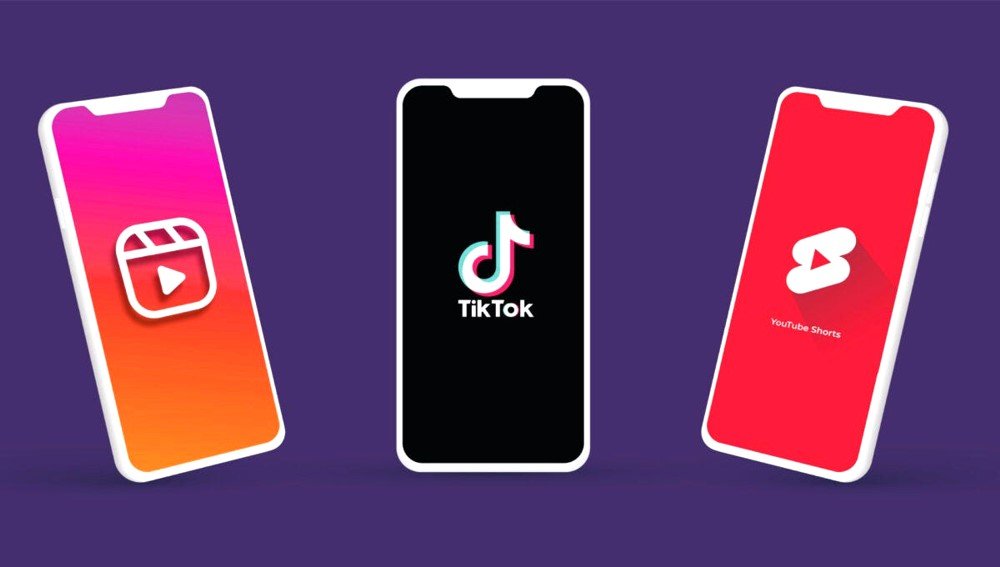Video Marketing: The Ultimate Guide (2024)
Video marketing is the practice of using video content to promote and market products, services, or brands. It involves creating videos that convey your message, engage your audience, and inspire action.

In 2024, video marketing has solidified its place as one of the most effective tools for engaging audiences, building brand awareness, and driving conversions.
With the rapid evolution of digital platforms and consumer behaviour, video content has become indispensable for businesses of all sizes.
This comprehensive guide delves into the nuances of video marketing, offering in-depth insights into the strategies, trends, and best practices that can elevate your marketing efforts this year.
What is Video Marketing?
Video marketing is the practice of using video content to promote and market products, services, or brands. It involves creating videos that convey your message, engage your audience, and inspire action.
The content can range from product demonstrations and customer testimonials to educational videos and brand stories. Video marketing has the unique ability to combine visuals, sound, and storytelling to create an immersive experience that resonates with viewers.
The Evolution of Video Marketing
Video marketing has come a long way from traditional television commercials. With the advent of digital platforms like YouTube, Facebook, and TikTok, businesses now have more opportunities than ever to reach their target audiences.
The rise of smartphones and high-speed internet has also made video content more accessible, allowing users to consume videos on the go.
Why Video Marketing Matters
Increased Engagement
Video content is inherently more engaging than text or static images. It captures attention quickly and can convey complex information in an easy-to-digest format.
According to studies, viewers retain 95% of a message when they watch it in video, compared to just 10% when reading it in text form.
Higher Conversion Rates
Videos can significantly boost conversion rates. Including a video on a landing page can increase conversions by up to 80%. This is because videos can effectively showcase products, explain features, and build trust with potential customers. A well-crafted video can move prospects down the sales funnel, turning interest into action.
Enhanced Brand Awareness
Video content is highly shareable, which can amplify your brand’s reach. Social media platforms prioritise video content, making it more likely to appear in users’ feeds.
Additionally, videos can help humanise your brand, allowing you to connect with your audience on a more personal level.
Improved SEO
Search engines love video content. Embedding videos on your website can increase the time users spend on your site, which is a key ranking factor for search engines.
Videos also provide additional opportunities for optimising content with keywords, improving your chances of ranking higher in search results. Google, in particular, often features videos at the top of search results, giving your content prime visibility.
Key Trends in Video Marketing for 2024
Short-Form Content

In 2024, short-form video content continues to dominate. Platforms like TikTok, Instagram Reels, and YouTube Shorts have popularised the trend of creating quick, engaging videos that capture attention in seconds. These videos are typically under 60 seconds and are perfect for delivering bite-sized content that is easily consumed and shared.
Why It’s Important: Short-form videos align with the decreasing attention span of online audiences. They are ideal for delivering concise messages, showcasing products, or creating viral content.
How to Leverage It: Focus on creating snackable content that is entertaining, informative, and aligned with your brand’s messaging. Use catchy music, quick cuts, and dynamic visuals to keep viewers engaged.
Live Streaming
Live streaming continues to grow in popularity as it allows brands to engage with their audience in real-time. Whether it’s for product launches, Q&A sessions, or behind-the-scenes looks, live streaming provides an interactive experience that pre-recorded videos cannot match.
Why It’s Important: Live streaming creates a sense of immediacy and exclusivity, making viewers feel more connected to your brand. It also allows for direct interaction through comments and reactions, fostering a community around your brand.
How to Leverage It: Plan your live streams in advance and promote them across your channels to maximise attendance. Engage with viewers by responding to comments in real-time, and consider offering exclusive content or discounts during the stream to encourage participation.
Personalised Videos
Personalisation in marketing is no longer optional, and video content is no exception. Personalised videos are tailored to individual viewers based on their preferences, behaviours, or past interactions with your brand. These videos can be as simple as addressing the viewer by name or as complex as customising the entire content based on their interests.
Why It’s Important: Personalised videos increase engagement and conversion rates by making viewers feel valued and understood. They help build stronger relationships with your audience by delivering content that is relevant and specific to their needs.
How to Leverage It: Use data-driven insights to create personalised video content. Segment your audience based on demographics, purchase history, or online behaviour, and tailor your video messages accordingly. Tools like video personalisation platforms can help automate this process.
Interactive Videos

Interactive videos are gaining traction as they offer a more engaging experience by allowing viewers to interact with the content. These videos can include clickable elements, quizzes, polls, and other interactive features that encourage viewer participation.
Why It’s Important: Interactive videos create a two-way communication channel, making viewers more engaged and invested in the content. They also provide valuable insights into viewer preferences and behaviours.
How to Leverage It: Incorporate interactive elements into your videos to increase engagement. For example, you can create a product demo video where viewers can click on different features to learn more or use polls to gather feedback during a live stream.
Types of Video Content
Promotional Videos
Promotional videos are designed to showcase your products, services, or brand in a compelling way. These videos often highlight the key benefits, features, and unique selling points of what you offer. They typically include a strong call to action, encouraging viewers to take the next step, whether it’s making a purchase, signing up for a newsletter, or visiting your website.
Best Practices:
- Keep it concise and focused on the main message.
- Use high-quality visuals and professional editing to create a polished final product.
- Include customer testimonials or social proof to build credibility.
Educational Videos
Educational videos are a great way to provide value to your audience by teaching them something new. These can include how-to guides, tutorials, explainer videos, and webinars. Educational content not only helps establish your brand as an authority in your industry but also builds trust with your audience.
Best Practices:
- Break down complex topics into easy-to-understand segments.
- Use visuals, animations, or infographics to illustrate key points.
- Encourage viewers to take action by applying what they’ve learned.
Customer Testimonials
Customer testimonial videos showcase real customers sharing their positive experiences with your product or service. These videos serve as powerful social proof, helping to build trust and credibility with potential customers.
Best Practices:
- Feature diverse customer stories that highlight different aspects of your product or service.
- Keep the testimonials authentic and avoid overly scripted content.
- Use a mix of B-roll footage and interviews to keep the video dynamic.
Brand Stories
Brand story videos go beyond promoting products or services; they focus on your brand’s mission, values, and vision. These videos are designed to create an emotional connection with your audience by sharing the story behind your brand.
Best Practices:
- Highlight your brand’s origin, mission, and the people behind it.
- Use storytelling techniques to engage viewers emotionally.
- Show how your brand makes a positive impact on customers or the community.
Creating Effective Video Content
Know Your Audience
Understanding your audience is the first step in creating effective video content. Analyse your audience’s demographics, interests, pain points, and viewing habits. This information will help you tailor your video content to meet their needs and preferences.
Steps to Take:
- Conduct surveys or use analytics tools to gather data on your audience.
- Segment your audience into different groups based on their characteristics.
- Create audience personas to guide your content creation process.
Plan Your Content
Planning is crucial for producing high-quality videos that resonate with your audience. Start by defining the purpose of your video and the key message you want to convey. Create a storyboard or script to outline the video’s structure, including the introduction, main content, and conclusion.
Steps to Take:
- Define your video’s objective and key message.
- Create a storyboard that outlines each scene and shot.
- Write a script that includes dialogue, voiceovers, and key visuals.
Focus on Quality
High-quality videos are more likely to engage viewers and convey professionalism. Invest in good equipment, such as a high-resolution camera, quality microphone, and proper lighting. Additionally, use professional editing software to enhance the final product.
Steps to Take:
- Use a high-definition camera for clear visuals.
- Ensure good lighting to avoid shadows and poor visibility.
- Record audio with a quality microphone to ensure clear sound.
Optimise for Mobile

With a significant portion of video content being consumed on mobile devices, it’s essential to optimise your videos for mobile viewing. This includes using formats that are mobile-friendly, such as vertical or square videos, and ensuring that the text and visuals are clear on smaller screens.
Additionally, consider using subtitles or captions, as many viewers watch videos on mobile devices with the sound off.
Steps to Take:
- Create videos in mobile-friendly formats (vertical or square).
- Use large, easy-to-read text and visuals.
- Add subtitles or captions to make your content accessible and engaging even without sound.
Hook Your Audience Early
The first few seconds of your video are critical for capturing the viewer’s attention. Start with a strong hook that immediately communicates the value of watching the video. This could be an intriguing question, a surprising fact, or a visually striking image.
Steps to Take:
- Begin with a compelling statement or question.
- Use eye-catching visuals or animations in the opening.
- Preview the content of the video to entice viewers to keep watching.
Include a Clear Call to Action (CTA)
Every video should have a clear call to action (CTA) that guides viewers on what to do next. Whether you want them to visit your website, sign up for a newsletter, or make a purchase, make sure the CTA is specific, actionable, and easy to follow.
Steps to Take:
- Decide on the primary action you want viewers to take after watching.
- Place the CTA at the end of the video, and consider reinforcing it with on-screen text.
- Make the CTA direct and clear, such as “Click the link below to learn more” or “Subscribe to our channel for more content.”
Video Optimisation for SEO
Keyword Research for Video
Just like with written content, keyword research is essential for optimising your videos for search engines. Identify the keywords your target audience is using to find content similar to yours. Incorporate these keywords into your video title, description, tags, and transcript.
Steps to Take:
- Use keyword research tools to find relevant keywords with good search volume.
- Focus on long-tail keywords that are specific to your video’s content.
- Include the primary keyword in the video title and description.
Optimise Video Titles and Descriptions
Your video title and description play a significant role in how your video is indexed by search engines and discovered by viewers. Craft a title that is both descriptive and includes your target keyword. The description should provide a summary of the video content, include relevant keywords, and encourage viewers to engage with the content.
Steps to Take:
- Write a compelling title that includes your main keyword.
- Create a detailed description that summarises the video and includes secondary keywords.
- Include a CTA in the description, such as a link to your website or related content.
Use Video Tags Wisely
Tags help categorise your video content and make it easier for search engines to understand the context of your video. Use a mix of broad and specific tags that relate to your video’s topic, keywords, and industry.
Steps to Take:
- Add 5-10 relevant tags to each video.
- Include both general tags (e.g., “marketing”) and specific tags (e.g., “video marketing tips”).
- Use tags that are relevant to your industry or niche.
Leverage Video Thumbnails
A well-designed thumbnail can significantly impact the click-through rate (CTR) of your video. Thumbnails should be eye-catching, relevant to the content, and include some form of text or visual cue that draws viewers in. Custom thumbnails tend to perform better than auto-generated ones.
Steps to Take:
- Design custom thumbnails that stand out in search results and social feeds.
- Use high-quality images and include a visual representation of your video’s content.
- Consider adding text overlays that highlight the main topic or benefit of the video.
Create Video Transcripts
Transcripts of your videos can improve SEO by providing search engines with more content to index. They also make your videos more accessible to a broader audience, including those who are hearing impaired or prefer reading over watching.
Steps to Take:
- Write out the full transcript of your video content.
- Include relevant keywords naturally within the transcript.
- Add the transcript to the video description or as a separate blog post.
Related: How to Build an Effective Content Distribution Strategy: 10 Easy Steps
Choosing the Right Video Platforms
YouTube
YouTube remains the dominant platform for video content, offering vast reach and powerful SEO benefits. It’s ideal for businesses looking to build an audience, generate leads, and increase brand visibility. YouTube’s search engine capabilities also make it easier for users to discover your content organically.
Why Use It:
- Largest video-sharing platform with billions of users.
- Strong integration with Google Search, boosting visibility.
- Offers monetization options through ads and sponsorships.
How to succeed:
- Consistently upload high-quality content.
- Engage with your audience through comments and community posts.
- Utilise YouTube Analytics to track performance and optimise future videos.
Instagram, with its focus on visual content, is perfect for brands looking to connect with a younger audience. Instagram Reels and IGTV allow for both short-form and long-form video content, making it a versatile platform for various types of video marketing.
Why Use It:
- Highly visual platform with strong engagement rates.
- Perfect for brands targeting millennials and Gen Z.
- Offers a range of video formats, from short reels to longer IGTV episodes.
How to succeed:
- Use Instagram Stories and Reels to share quick, engaging content.
- Collaborate with influencers to increase reach and credibility.
- Use hashtags and location tags to improve discoverability.
Facebook remains a powerful platform for video marketing, especially for reaching a broad, diverse audience. With features like Facebook Live and video ads, businesses can engage their audience in real-time and promote their content to targeted users.
Why Use It:
- Wide user base, making it suitable for various demographics.
- Facebook Live offers real-time interaction with followers.
- Video ads can be targeted based on user data, ensuring your content reaches the right audience.
How to succeed:
- Regularly post engaging video content to keep your audience interested.
- Experiment with Facebook Live to connect with your audience in real time.
- Use Facebook Ads to promote your videos and reach a larger audience.
TikTok
TikTok has rapidly become a key player in video marketing, particularly for brands targeting younger audiences. The platform’s algorithm favours content that is creative, authentic, and engaging, making it a hotspot for viral videos.
Why Use It:
- Fast-growing platform with a young, active user base.
- Encourages creative, short-form content that can go viral.
- Offers opportunities for user-generated content and brand challenges.
How to succeed:
- Focus on creating fun, relatable content that resonates with TikTok’s audience.
- Participate in trending challenges and use popular music tracks.
- Engage with users through comments, duets, and collaborations.
For B2B marketers, LinkedIn is an excellent platform for sharing professional video content. LinkedIn videos can help establish thought leadership, share industry insights, and showcase company culture.
Why Use It:
- professional network is ideal for B2B marketing.
- Videos can be used to demonstrate expertise and build credibility.
- LinkedIn’s algorithm favours native video content, increasing visibility.
How to succeed:
- Post videos that provide value, such as industry tips, case studies, or webinars.
- Use LinkedIn Stories for behind-the-scenes content or quick updates.
- Engage with your network by responding to comments and participating in discussions.
Measuring Video Marketing Success
Key Performance Indicators (KPIs)
To measure the success of your video marketing efforts, it’s essential to track specific KPIs. These indicators will help you understand how well your videos are performing and where you can make improvements.
Important KPIs to Track:
- Views: The total number of times your video has been watched.
- Engagement Rate: The percentage of viewers who interact with your video (likes, comments, shares).
- Click-Through Rate (CTR): The percentage of viewers who click on a link or CTA in your video.
- Conversion Rate: The percentage of viewers who take a desired action, such as making a purchase or signing up for a newsletter.
- Watch Time: The total amount of time viewers spend watching your video.
Analysing Video Performance
Regularly reviewing your video analytics is crucial for understanding what’s working and what’s not. Platforms like YouTube, Facebook, and LinkedIn offer detailed analytics tools that can provide insights into viewer behaviour, demographics, and engagement.
Steps to Take:
- Use platform-specific analytics tools to track video performance.
- Identify trends in viewer behaviour, such as drop-off points or high engagement periods.
- Adjust your video content strategy based on the data you collect.
A/B Testing
A/B testing involves creating two versions of a video with slight variations to see which one performs better. This can be done by changing elements such as the thumbnail, title, CTA, or even the video length.
Steps to Take:
- Create two versions of a video with different elements (e.g., different thumbnails or titles).
- Run both versions simultaneously to a similar audience.
- Compare the performance metrics to determine which version is more effective.
Common Video Marketing Mistakes to Avoid
Ignoring Your Audience
One of the biggest mistakes in video marketing is creating content without considering your audience’s preferences and needs. Always prioritise your audience when planning and creating videos.
Avoiding the Mistake:
- Conduct audience research before creating content.
- Tailor your videos to address the specific pain points and interests of your target audience.
- Regularly engage with your audience to gather feedback and insights.
Overlooking SEO
Failing to optimise your videos for search engines can limit their visibility and reach. SEO should be a key component of your video marketing strategy.
Avoiding the Mistake:
- Always conduct keyword research before creating a video.
- Optimise titles, descriptions, and tags with relevant keywords.
- Add transcripts and captions to enhance search engine indexing.
Focusing Only on Views
While views are important, they are not the only metric that determines the success of a video. Engagement, conversions, and overall impact on your business goals are equally, if not more, important.
Avoiding the Mistake:
- Track a variety of metrics, including engagement rate, CTR, and conversion rate.
- Focus on creating content that drives meaningful interactions, not just high view counts.
- Regularly assess how your videos are contributing to your overall marketing objectives.
Neglecting Mobile Users
With the majority of video content being consumed on mobile devices, ignoring mobile optimisation can significantly impact your video’s performance. Ensure your videos are mobile-friendly to reach a wider audience.
Avoiding the Mistake:
- Create videos that are easy to view on smaller screens.
- Use mobile-friendly formats like vertical or square videos.
- Test your videos on mobile devices before publishing.
Inconsistent Posting
Inconsistent posting can lead to a drop in audience engagement and interest. Regularly publishing content helps maintain your audience’s attention and builds momentum for your brand.
Avoiding the Mistake:
- Develop a content calendar to schedule regular video uploads.
- Stick to a consistent posting schedule that your audience can rely on.
- Use tools to automate video uploads if necessary to maintain consistency.
Conclusion
Video marketing has evolved into a powerful tool that can help businesses connect with their audience, build brand awareness, and drive conversions.
By following the best practices outlined in this guide, you can create compelling video content that resonates with your target audience and achieves your marketing goals.
Remember to prioritise your audience, optimise for search engines, and regularly measure your performance to continually improve your video marketing strategy. With the right approach, video marketing can significantly contribute to your business’s success in 2024 and beyond.





